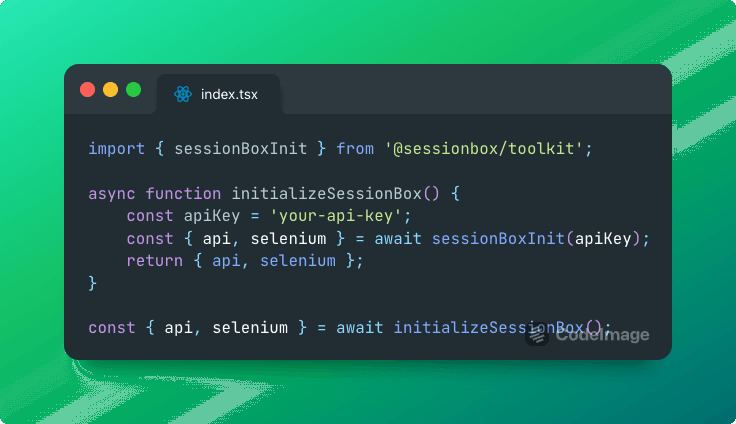
Blog /
Tutorials
Automating Gmail Account Creation
Using Selenium and SessionBox
Alexandre Chapuis, Nov 14, 2023
Learn how to use SessionBox to automate your Gmail account creation
Automating Gmail Account Creation using Selenium and SessionBox
SessionBox is a versatile and powerful tool designed to streamline browsing experiences by allowing users to manage multiple sessions within a single browser. It provides a seamless way to compartmentalize various online activities, enabling users to create separate sessions for different purposes without the need for multiple browsers or profiles. Whether it's for managing work-related tasks, handling personal accounts, or conducting research without interference, SessionBox offers a convenient solution, ensuring privacy, efficiency, and enhanced productivity in the digital realm.
Automation has become an integral part of various tasks, including account creation. This JavaScript tutorial focuses on automating Gmail account creation using Selenium, a powerful automation tool, and the SessionBox package. Let's dive into the step-by-step process to achieve this, understanding each stage through detailed descriptions.
Tools Required for Automation
Creating a Gmail Account with Selenium
Now, let's break down the process into manageable steps, each associated with a specific image and code snippet:
- Step 1: To get started, import the SessionBox toolkit, locate the API key within SessionBox One. You can find the key, by going to Settings, and press ‘Issue API key’. With the key, and Sessionbox One running, you can initialize the selenium functionality of the package as shown above.

- Step 2: Now you will need to create a new profile. The openNewProfile function expects 2 parameters, one is profileType, which can be ’temp’ for temporary, ‘cloud’ or ‘local’. The other parameter is the url you’d like your profile to open, which in this case is the URL to create a new Gmail account.

- Step 3: Your next task is to write an automation script for creating a new account, including filling out input fields for name, birthdate, gender, email, and password. Please be aware that the Selenium script provided might require modifications in the future, as the dynamic nature of web applications may necessitate overwriting the script to ensure functionality.

- Step 4: Lastly, you'll need to include a main function. Call the init function and the createGmailAccount function here.

Disclaimers and Precautions
It's important to note that Google may flag automated processes, leading to account suspension. For safety, consider using proxies. Click here to explore our partners proxy options.
Conclusion
Automating Gmail account creation became super easy using SessionBox and Selenium. Use this guide responsibly, considering safety measures for a seamless experience. Still not using SessionBox? Start your 7 day free trial here.
You can find the code on this Github repo.
FAQs
Can this method guarantee no account suspension?
No, while automating account creation, there's always a risk of suspension due to bot suspicion. Use cautiously.
Are there alternatives to Selenium for automation?
Yes, other tools like Puppeteer exist, each with its unique features and functions. At the moment, SessionBox automation is only supported with Selenium.
Is using proxies the only way to ensure safety?
Proxies are one method; altering automation patterns and timing can also mitigate risks. We guarantee the best success rate combining SessionBox and our proxys partners.
Can automation be used for other tasks besides account creation?
Absolutely! Automation finds application in various tasks, offering efficiency and scalability. We will soon release new tutorials to give you more examples.
sessionbox


